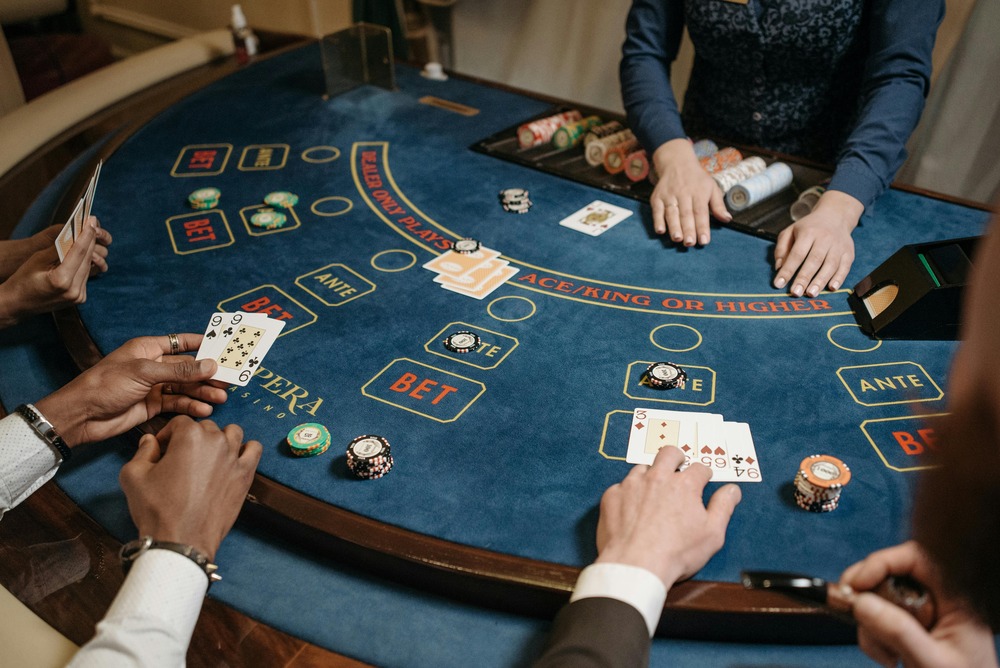The Mathematics Behind Card Counting: Understanding EOR
In the game of blackjack, understanding the Expected Outcome Ratio (EOR) is crucial for players seeking a strategic advantage. By delving into the mathematical principles of card counting and EOR, players can enhance their gameplay beyond relying solely on chance.
The application of EOR in blackjack involves calculating the expected value of different card combinations to make informed decisions during gameplay. This mathematical approach allows players to adjust their strategies based on the likelihood of certain cards appearing, increasing their chances of winning.
Overall, a deeper understanding of EOR can significantly impact a player’s performance and outcomes in blackjack.
The Basics of Card Counting
When delving into the practice of card counting, it’s essential to grasp the fundamental principles.
Each card in a deck is assigned a specific value. Cards 2 to 6 are valued at +1, cards 7 to 9 hold a neutral value of 0, and cards 10 to Ace are valued at -1.
By maintaining a mental count of these values as cards are revealed during gameplay, one can track the ratio of high and low cards remaining in the deck.
This count enables players to make more calculated decisions when placing bets.
It’s important to note that successful card counting doesn’t entail memorizing every card but rather focusing on the overall balance to gain a strategic advantage in the game.
I recomend our article The History of Card Counting: From Thorp to Modern Day.
Importance of Expected Outcome Ratio
Understanding the expected outcome ratio, commonly known as EOR, is essential for effective card counting strategies. The EOR helps players evaluate the impact of different card values on the game, providing valuable insights for decision-making. Here are key reasons why the expected outcome ratio is significant:
-
Predictive Analysis: EOR enables players to predict the probability of specific cards being dealt, aiding in making informed decisions during gameplay.
-
Risk Assessment: By grasping the concept of EOR, players can adjust their betting strategies based on the cards remaining in the deck, thus managing risk more effectively.
-
Profit Optimization: Leveraging EOR can lead to more strategic gameplay, potentially increasing overall profitability by aligning decisions with more favorable outcomes.
Mastering the expected outcome ratio is crucial for enhancing the efficiency and success of card counting techniques.
Calculating EOR in Blackjack
To calculate the Expected Outcome Ratio (EOR) in Blackjack effectively, one must consider the impact of specific card values on the game’s dynamics. Each card in Blackjack is assigned a value that directly influences the likelihood of winning a hand. By assigning positive, negative, or neutral values to cards, players can determine the EOR for various card combinations.
High cards like Aces and 10s typically have a positive effect on the player’s odds, whereas low cards such as 2s to 6s tend to favor the dealer. Keeping track of the running count and adjusting playing strategies based on EOR calculations enable players to make more informed decisions during gameplay, potentially enhancing their chances of success at the Blackjack table.
Applying EOR in Card Counting
To effectively apply EOR in card counting, it’s essential to understand how specific card values directly impact the game. By incorporating these insights, you can improve your card counting strategy significantly.
Here are three key ways to apply EOR effectively:
-
Adjust your betting strategy: Increase your bets when the EOR is in your favor to take advantage of potential winnings.
-
Modify your playing decisions: Utilize the EOR to make informed choices on when to hit, stand, double down, or split during gameplay.
-
Track the running count: Continuously update and utilize the running count based on the EOR to make timely adjustments as the game progresses.
Enhancing Strategies With EOR
To enhance your strategies in blackjack, incorporating the concept of Expected Outcome of Removal (EOR) is essential. EOR helps in making more calculated decisions by considering the probability of certain cards being drawn. By analyzing the impact of removing specific cards from the deck, players can adjust their betting and playing strategies accordingly.
For instance, if there’s a high frequency of high-value cards dealt, the EOR suggests a higher chance of lower cards appearing, prompting strategic adjustments. Utilizing EOR provides a deeper understanding of the game dynamics, leading to improved outcomes at the blackjack table.
If you are interested in the psychology of card counting, check out this article: https://admiralcasino-ru.com/2024/11/01/the-psychology-of-card-counting-maintaining-focus-under-pressure/
Conclusion
Understanding the mathematics behind card counting and Expected Outcome Ratio (EOR) can be a valuable tool to enhance your blackjack gameplay. By utilizing EOR calculations, adjusting your betting and playing strategies based on the running count, and effectively tracking the cards, you can potentially improve your chances of winning in blackjack. Through consistent practice and skill refinement, you can develop your card counting abilities and increase your success as a player at the blackjack table.

